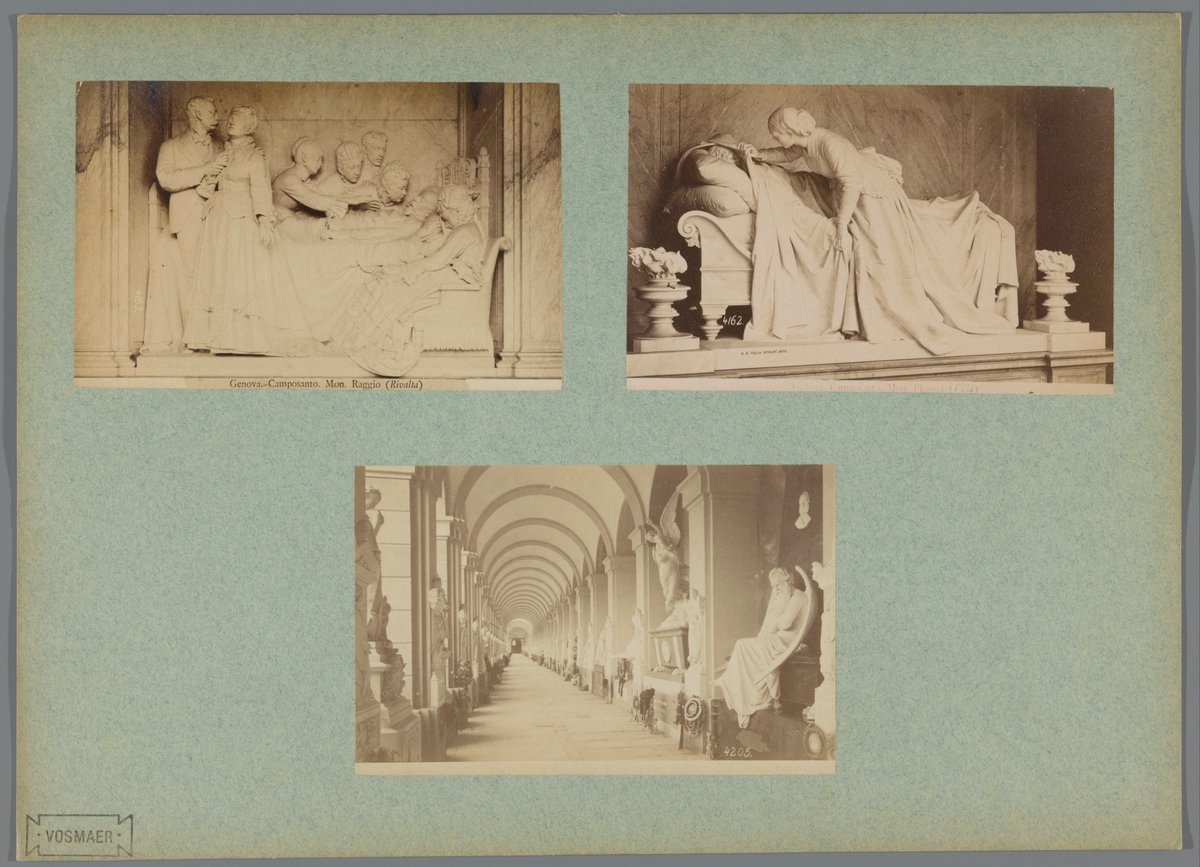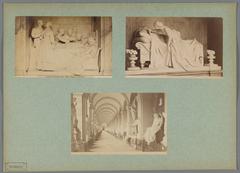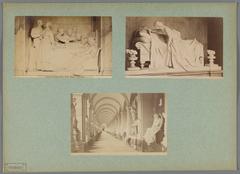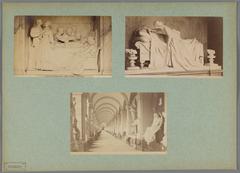
Tomb of the Pienovi Family, Genoa, Italy: Visiting Hours, Tickets, and Historical Significance
Date: 14/06/2025
Introduction
The Tomb of the Pienovi Family, nestled in the Monumental Cemetery of Staglieno in Genoa, Italy, stands as a masterwork of 19th-century funerary art and a testament to the city’s storied cultural heritage. As part of one of Europe’s grandest open-air museums, the tomb reflects both the artistic innovation and the social history of Genoa’s bourgeoisie. This guide provides comprehensive information on visiting hours, ticketing (notably free entry), accessibility, and practical tips, ensuring a meaningful and respectful experience for all visitors—whether art enthusiasts, historians, or those eager to discover Genoa’s unique heritage (Visit Genoa; Bimbe in Viaggio).
Table of Contents
- Introduction
- Historical and Artistic Context
- Cultural Significance
- Location and Access
- Visiting Hours, Tickets, and Tours
- Navigating the Cemetery
- Accessibility and Visitor Conduct
- Practical Tips
- Nearby Attractions
- Frequently Asked Questions (FAQ)
- Conclusion
- References
Historical and Artistic Context
Staglieno Cemetery: An Artistic Landmark
Established in 1835 and inaugurated in 1851, the Monumental Cemetery of Staglieno sprawls across 330,000 square meters on Genoa’s hillside. Designed by Carlo Barabino and completed by Giovanni Battista Resasco, Staglieno became a prestigious final resting place for Genoa’s elite, adorned with exquisite examples of Neoclassical, Gothic, and eclectic funerary art (Ancient Origins).
The Pienovi Family Tomb
Commissioned by the Pienovi family in the late 19th century and crafted by sculptor G.B. Villa in 1879, their tomb stands as a poignant tribute to love and loss. The highlight is the moving sculpture of Virginia Pienovi bidding farewell to her husband Raffaele—a theme that embodies both personal grief and universal human emotion (TourHQ). The tomb’s naturalistic portraiture, symbolic motifs (such as laurel wreaths and broken columns), and architectural grandeur mirror the eclectic artistic trends of the era (Visit Genoa; Bimbe in Viaggio).
Cultural Significance
The Pienovi tomb is more than a memorial; it represents the aspirations and values of Genoa’s burgeoning bourgeoisie during the industrial boom of the 19th century. Families commissioned grand tombs not only to honor their dead, but also to display social standing, piety, and civic pride. Staglieno in general—and tombs like the Pienovi’s in particular—became canvases for renowned artists, elevating funerary art and influencing cemeteries across Europe (Ancient Origins; Alamy).
The cemetery is also a place of pilgrimage for literary and historical figures—Mark Twain, Ernest Hemingway, and Friedrich Nietzsche all visited and praised its evocative atmosphere (Ancient Origins).
Location and Access
- Address: Monumental Cemetery of Staglieno (Cimitero Monumentale di Staglieno), Piazzale Resasco, Genoa, Italy.
- By Bus: AMT Genoa bus lines 31, 34, 36, 48, and 480 connect from the city center to “Staglieno.”
- By Taxi: Taxis are available citywide and can drop visitors at the main entrance.
- By Car: Paid parking is available near Piazzale Resasco, though spaces are limited on weekends and holidays (Lonely Planet).
Visiting Hours, Tickets, and Tours
- Opening Hours: Generally, 7:30 AM to 5:00 PM daily. Hours may be adjusted on public holidays or for maintenance—check the official website or Visit Genoa for current details.
- Admission: Free for all visitors; donations for preservation are welcome.
- Guided Tours: English and Italian tours are available for a fee. These often include the Pienovi tomb and other major monuments (TourHQ).
Navigating the Cemetery
- Maps: Obtain a map at the main entrance or download via official websites. Apps such as GPSmyCity provide self-guided walking routes.
- Layout: The cemetery covers terraced hillsides and arcades. The Pienovi tomb is in one of the historic galleries, accessible via main pathways but requiring some uphill walking.
- Signage: Key monuments are signposted, but a guide or map is recommended for efficient navigation.
Accessibility and Visitor Conduct
- Wheelchair Access: Some main paths are paved, but upper sections and the area around the Pienovi tomb involve steps and uneven ground. Wheelchair users and those with mobility concerns should plan accordingly.
- Restrooms: Located near the main entrance.
- Refreshments: Not available onsite—bring water, especially in warm weather.
- Conduct: Maintain silence, dress respectfully, and avoid touching sculptures. Photography is allowed for personal use but should be discreet and respectful (MarbleBee).
Practical Tips
- Best Time to Visit: Early morning or late afternoon for gentle light and fewer crowds. Spring and autumn offer pleasant weather.
- What to Bring: Comfortable shoes, sun/rain protection, and a camera for personal memories.
- Group Visits: Large groups should book guided tours in advance to ensure availability.
Nearby Attractions
- Other Monuments: The Appiani tomb, Caterina Campodonico’s monument, and the grave of Mary Constance Lloyd (wife of Oscar Wilde) are notable highlights (Lonely Planet).
- Giuseppe Mazzini’s Tomb: Located within the cemetery’s Boschetto dei Mille section, paying homage to a central figure in Italian unification (PlanetWare).
- Genoa’s Historical Center: Via Garibaldi, Palazzi dei Rolli, Porto Antico, and the Cathedral of San Lorenzo are easily reached by public transport (Visit Genoa; Italy Best).
Frequently Asked Questions (FAQ)
Q: What are the opening hours for the Tomb of the Pienovi Family?
A: The cemetery is open daily, generally from 7:30 AM to 5:00 PM. The Pienovi tomb is accessible during these hours.
Q: Is there an entrance fee?
A: No, admission is free. Guided tours may require a ticket.
Q: Are guided tours available in English?
A: Yes, several organizations offer English-language tours featuring the Pienovi tomb.
Q: Is the cemetery wheelchair accessible?
A: Some areas are accessible, but the terrain can be steep and uneven—contact the cemetery for details.
Q: Can I take photographs?
A: Yes, for personal use. Please be respectful and avoid photographing mourners.
Conclusion
A visit to the Tomb of the Pienovi Family at Staglieno Cemetery is a journey through Genoa’s artistic, historical, and social legacy. The evocative sculpture and tranquil setting invite contemplation and offer a powerful connection to the city’s cultural soul. Plan your visit around published hours, consider a guided tour for deeper insights, and explore the many treasures of Genoa’s monumental cemetery and its surroundings.
For more information, curated tours, and maps, download the Audiala app or consult the official tourism channels. Stay updated by following local resources and exploring more about Genoa’s historical sites.
References and Further Reading
- Visit Genoa
- Bimbe in Viaggio
- Ancient Origins
- TourHQ
- Alamy
- Lonely Planet
- Visit Genoa - Practical Visitor Info
- MarbleBee
- GPSmyCity
- PlanetWare
- Italy Best





































































































